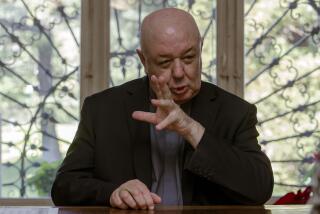‘The Sistine Secrets: Michelangelo’s Forbidden Messages in the Heart of the Vatican’ by Benjamin Blech and Roy Doliner
- Share via
MICHELANGELO studied the Kabbalah and Talmud? It’s all right there, above our heads, as Benjamin Blech and Roy Doliner demonstrate in their fascinating study of the Sistine Chapel, “The Sistine Secrets” (HarperOne: 336 pp., $26.95). I understand the desire to reach Dan Brown’s audience with the book’s provocative subtitle -- “Michelangelo’s Forbidden Messages in the Heart of the Vatican” -- but this book is hardly a “Da Vinci Code” knockoff. The authors, both experts on Judaica, scoured Michelangelo’s work and found many oddities, raising such questions as: Why does the serpent in Eden have arms? Why, in that scene, is the Tree of Knowledge a fig tree instead of an apple tree? And, hey, why does the shape of “The Last Judgment” resemble the tablets of the Ten Commandments?
The Florence of the Medicis, the authors explain, was a community receptive to the Jews in a time of tumult and intolerance elsewhere. Jewish philosophy and thought filtered down to the young artist through master tutors, such as Pico della Mirandola. It was the search for an all-embracing religious philosophy, the authors suggest, that led Michelangelo to draw on alternative sources for his biblical subjects and to “brilliantly hide inside these works antipapal messages more in keeping with his true universalistic feelings.” Like the best art historians, the authors give us a fresh context for the times, never hesitating to make contemporary parallels: The Medicis, for instance, gave to Florence “the feeling of a new golden age, comparable in many ways to the popular spirit . . . when the Kennedy family brought the feeling of ‘Camelot’ to Washington.” This is a stimulating exploration that makes familiar masterpieces seem strange and new.
-- Nick Owchar
More to Read
Sign up for The Wild
We’ll help you find the best places to hike, bike and run, as well as the perfect silent spots for meditation and yoga.
You may occasionally receive promotional content from the Los Angeles Times.








